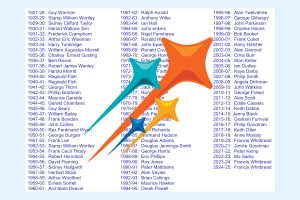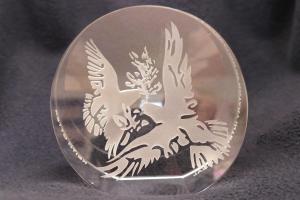Sarah Scannell: Medical Detection Dogs
Thu, Jul 27th 2023 at 12:45 pm - 2:15 pm
We hear about these highly skilled canines

 Today’s speaker was Sarah Scannell from the charity Medical Detection Dogs. Medical detection dogs are trained to detect the distinctive smells produced by humans when they are infected by particular diseases or, in some cases, are about to suffer an attack brought on by a continuing disease or medical condition. The best dogs are from the gun dog varieties as they have not been bred to alter the shapes of their noses. Sarah told us that a human can detect a spoonful of sugar in a cup of tea but a dog can detect a spoonful of sugar in a swimming pool.
Today’s speaker was Sarah Scannell from the charity Medical Detection Dogs. Medical detection dogs are trained to detect the distinctive smells produced by humans when they are infected by particular diseases or, in some cases, are about to suffer an attack brought on by a continuing disease or medical condition. The best dogs are from the gun dog varieties as they have not been bred to alter the shapes of their noses. Sarah told us that a human can detect a spoonful of sugar in a cup of tea but a dog can detect a spoonful of sugar in a swimming pool.
The charity’s founder became aware of dogs’ ability to detect diseases when her pet dog started behaving strangely, sitting in front of her when she was walking and nudging her chest when she was sitting down. She eventually went to the GP and was diagnosed with breast cancer, fortunately in time for the condition to be brought under control. Medical detection dogs trained by the charity are now recognised as medical assistance dogs, allowing them to go with their human partners into places where dogs are normally banned.
Some dogs are trained to live with a partner who has a relevant disease or condition, such as Parkinson’s, diabetes or epilepsy. These “Medical Alert Assistance Dogs” get their partner’s attention when an attack is about to take place, giving them time to lie down safely or take other appropriate action. If necessary the dogs can also attract the attention of passers-by.
Other dogs are trained to work in the laboratory, smelling samples in an effort to detect a disease. They are tested under controlled conditions first.
Each dog can only detect one specific disease. It takes up to two years to train a dog, at a cost of £29,000. Puppies are first placed with “Socialisers” to get them used to interacting with people and to the environments in which they will be working.
The charity has a range of fund-raising schemes, including sponsorship of a puppy.










